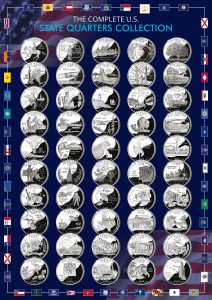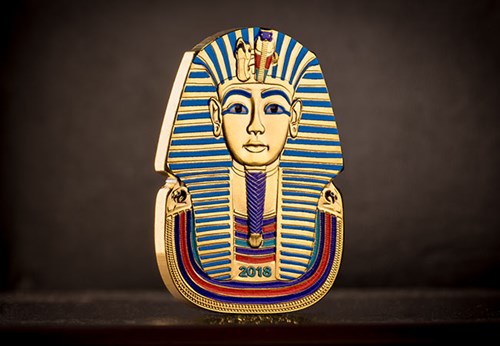Posts Tagged ‘foreign coins’
Discover the currency of Egypt!
For the past few months at Change Checker HQ, we’ve been really enjoying researching different coins from around the world. And the coinage from the sunny climes of Egypt has really caught our attention…
After a bit of digging around, we’ve found out some interesting facts about these fascinating coins… Did you know that Egypt, just like us, uses the ‘pound’ as their currency?
But wait! Before you pack your bags and prepare for a trip abroad without the hassle of exchange rates, you need to be aware that this is not the British pound as we know it, but the Egyptian Pound!
Each pound is made up of 100 piastres (what we would refer to as pennies), and 22 Egyptian pounds convert to 1 British Sterling pound. Egyptian coins are in denominations of 1, 5, 10, 20, 25 and 50 piastres, along with the 1 pound coin of course.
Egypt’s currency design is based largely on its ancient history, with pharaohs, pyramids and past dynasties proving to be popular themes across Egypt’s coinage, including Tutankhamun, Cleopatra and the Pyramids of Giza.

When exploring further into the background of these coins, it’s no wonder Tutankhamun has been chosen as such a poignant design, featuring on the highest denomination, the £1 coin.
As one of the only perfectly preserved Egyptian Royal Tombs, the myth of Tutankhamun is world-famous, making him the best-known King of Egypt. In terms of coinage, Tutankhamun has not only featured in Egyptian minting, but worldwide on various coins (including this recently released coin from Ghana struck in the shape of Tutankhamun’s mask).
Cleopatra also features heavily on Egyptian coins, as the last active ruler of the Ptolemaic Kingdom of Egypt. Her name directly translates to ‘Glory of her father’, and it was rumoured she was romantically involved with Julius Caesar and Mark Anthony. Her legacy is ever standing due to what she represented in a male-dominated society – a strong woman able to hold a country together throughout warfare just as well as her male counterparts. A fitting face for any coin I think!

Egypt 50 Piastres Cleopatra – 2005
It’s clear that the currency of Egypt sits on a proud heritage that maps out its ancient world through the striking designs of its coins. But what do you think about these coins? Let us know in the comments below!
The Coin Series that Half of America Collected…
In 1999 the first 5 coins of a remarkable series made their way into the hands of the American public. Designed to give a boost to the nation’s interest in numismatics, these specially themed ‘State’ Quarter Dollars rapidly became the most popular collecting phenomenon in American history.

1999 State Quarters. Credit: usacoinbook.com
In 1993 a committee was formed to investigate ways to generate interest from younger collectors in the American numismatic market. Little did they know the ideas proposed in that very meeting would transcend all ages and interests and become the most widely collected series of coins in American history, and arguably, the world.
The key proposal was a collection of 50 new quarters – one for every state. 5 quarters were released a year over a ten year period, with the reverse designs representing the history and heritage of each state – a timeless reminder of the breadth and diversity of American culture. To make room for these intricate designs the familiar writing ‘Quarter Dollar’, ‘Liberty’ and ‘In God We Trust’ was moved onto the obverse.
The planning process to get such a momentous series of coins produced is estimated to have involved 3.5 million people, whether that was submitting design concepts or voting for their favourite.
The hard work resulted in a series of coins which are a true spectacle, each a miniature work of art. From the Wright Brothers Plane on the North Carolina coin, Mount Rushmore on the South Dakota coin, to Chimney Rock on the Nebraska coin, and the Grand Canyon on the Arizona coin, each design is a talking point and little piece of US history.

Despite their obvious popularity there was a time when their very survival was in jeopardy. Various reports state that the US Treasury was opposed to the idea, unconvinced by the figures and unsure of the concept. Nevertheless the State Quarters Programme made it through a strict feasibility study unscathed, and the first coins were struck in 1999 – the rest is history…
It’s estimated that nearly half of all Americans collected these coins in some form or another. That’s roughly 150 million people!
But as the series was technically intended for circulation it could sometimes take years for a collector to find all the quarters in their change. And as each coin was struck for just 10 weeks, never to be struck again, finding every single one of these coins would still take a monumental effort. Especially as a significant proportion of the coins were taken out of circulation straight away into private collections, making them harder to find than ever before.
The coins were so popular that in 2009, following the conclusion of the 50 State Quarters Program, a one year follow up series began featuring six additional Quarters that represented the six US jurisdictions that aren’t classified as states.
What’s more, these extra coins had a significantly lower mintage of 636,200,000 – a tiny amount compared to the 50 State Quarters Program that had its lowest mintage in 2008 with just 2,438,200,000 Quarters being issued.
These 56 US Quarters in total clearly make for an excellent collection of US coinage and it’s not surprising that this collection became the most successful numismatics program in history!
Start collecting today with 6 of the MOST WANTED US Quarters
Start your very own journey with the collection of US State Quarters that Half of America Collected… and save yourself all the hard work of searching for each of these quarters individually.
Start by securing the 6 MOST WANTED US Quarters for just £15 >>
Discover the Treasure Hidden in your Holiday Change!
Summer is right around the corner and as we start thinking about jetting off on holiday for some fun in the sun, it’s time to organise that all important foreign currency.
But have you ever thought about checking your holiday money for hidden treasures and rare coins?
Having recently returned from a two week holiday in Japan, I’ve got foreign currency on my mind and a few leftover Yen in my pocket!
Despite the growing use of credit and debit cards in Japan, the country still relies largely on cash for daily spending, making coins an indispensable aspect of living – although it did take me some time to feel comfortable handling their 500, 100 and 50 Yen coins! Other denominations of Japanese currency include 20, 10, 5 and 1 Yen coins and 1,000, 5,000 and 10,000 Yen notes, with 10,000 Yen converting to roughly 65 Pounds.
Since returning to England, I’ve begun to wonder what some of these coins might be worth…
The 5 Yen coin is said to be the luckiest of all because of the way the Japanese pronunciation of the coin sounds – “Go-en” –which is the same as the word for destiny in Japanese and the expression for good luck.
When visiting the many Shinto shrines around the country, I noticed people giving 5 Yen coins as donations, and souvenirs of the coin were available to buy, decorated with ribbons and chains through the handy hole in the middle, which can be used to string many coins together.

Lucky 5 Yen coins at a Japanese Shinto shrine. Credit zoomingjapan.com
Roughly converting to a mere 3 Pence, these coins have sold online for much higher than their face value. If dated before 1959 they could be worth about £7 if in uncirculated condition. Coins dated 1957 are scarce and could be worth around £20 in uncirculated condition.
Japan might not be everyone’s typical holiday location, but you too could discover a hidden treasure when you return from your next holiday, with many European, US and Australian coins proving to be very collectable.
Lucy Mackenzie, our Head of Numismatics says, “I would recommend they do their research before they travel to their destination and pay close attention to their change as they could find a rare coin or mis-strike.
“The minting process is never completely exempt from human error and mistakes happen, when it comes to coins these mistakes can often be worth a lot money to sharp-eyed collectors.”
So which holiday destinations do we deem to be the ‘hot spots’ for rare coin hunting?

Currency from around the world.
Europe
Europe is certainly a popular and convenient location for us Brits abroad, but before you think about getting rid of those Euros when you return, keep your eyes peeled for the special edition 2 Euros which have been sold for up to fourteen times face value!
Most sought after editions include the 2011 2 Euro Europa from Greece, the 2008 2 Euro Human Rights coin from Finland, 2005 Austrian state contract coin and the 2007 Monaco 2 Euro featuring Grace Kelly which has become one of the rarest commemorative coins, selling for roughly £1,100.
You might also be lucky enough to discover old tender in Europe on your next holiday. These coins were replaced by the Euro in 1999 but could now achieve an easy profit.
Look out for Irish coins from the 1980s and 90s which have been valued for thousands of pounds at auction. The 1985 copper-coloured 20p and the 1992 10p are also ones to hunt out and have both been sold at $5-$10,0000!

2007 Monaco 2 Euro, one of the rarest commemorative coins. Credit: fleur-de-coin.com
America
For a hop across the pond to America, you could get your hands on rare quarters such as the 2004 Wisconsin extra leaf high quarter, which eBay says is the most sought after of all due to an extra cornstalk leaf on the design being struck by mistake. This small error means that these coins are being sold online for up to £125!
Also look out for the 2005 Minnesote Doubled-die Extra Tree Quarter and the 2000 South Carolina off-centre error quarter to add to your rare coins collection when on your trip stateside.

2004 Wisconsin State Quarter with extra leaf. Credit: usacoinbook.com
Australia
If you’re travelling farther afield, the Australian mule could make you a tasty profit of $1,000 and has been sold for thousands online, with one selling for $2,742 at auction in 2016.
The production error occurred in 2000, resulting in a coin that was thicker than usual, with a double rim on the Queen’s side. If this treasure turns up in your foreign change, it’s definitely worth keeping hold of!

Australian 1 Dollar mule, selling for £1,000. Credit: dailymail.co.uk
I’ve certainly admired the beauty of the coins I’ve found on my travels and always keep hold of a few as mementos, but it’s also worth being extra vigilant and checking your foreign currency to see if you can find any hidden gems!
Have you found any rare coins on your trips abroad? Let us know in the comments below.


